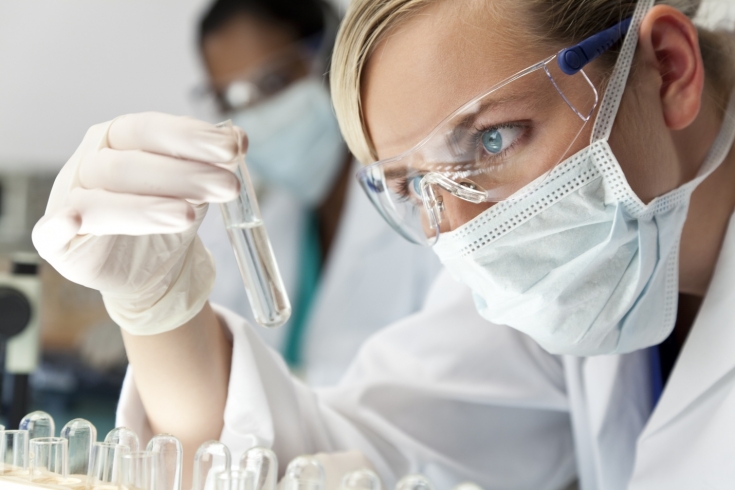The whole history of mankind is inextricably linked with the development of medicine and amazing discoveries that have saved millions of lives. It is natural that medical discoveries, which mankind has become aware of over the past few years, were made as a result of the intensive development of scientific and technological progress, the development and implementation of the latest technologies. Many of them have become possible thanks to the unprecedented and incomprehensible for the uninitiated symbiosis of cybernetics and biology. But, of course, the discoveries of new generations of drugs are also very impressive and estet-portal invites its readers to get to know them better.
Teixobactin — new generation antibiotic
In 2014, the WHO informed humanity about the advent of the post-antibiotic era. Indeed, medical science has not developed new antibiotics since the late eighties of the last century. However, in 2015, doctors announced the completion of preliminary experiments related to the discovery of a new series of antimicrobial drugs, among which teixobactin deserves special attention, which fights with high efficiency against resistant Staphylococcus aureus and the causative agent of tuberculosis. The difference of this drug, in comparison with all its predecessors, lies in its nature of the effect on the pathogenic microflora, which blocks the ability of pathogenic microbes to divide cells. Thus, microorganisms lose the ability to adapt to the drug,
Nanobots – medical discovery that will help in the fight with cancerScientists at an Israeli university are conducting research on the creation of nanorobots, whose task is to destroy cancer cells. As a basis for them, DNA material was used that is biocompatible with the human body, and at the same time, decomposes and is excreted in a natural way. Such DNA can carry bioactive molecules or drugs. They are carried by the blood stream and are able to recognize and destroy cancer cells.
At present, two stages of experiments have been completed, which have confirmed the high efficiency and accuracy of the application. In 2017, it is planned to test nanorobots on cancer patients with an extremely unfavorable prognosis.
Creation of an injectable brain nanoimplant
Another use case for nanotechnology has been the brain nanoimplant. The authors of the development were scientists from Harvard. The design they created is a universal frame (mesh) that is implanted in the patient's brain. Subsequently, nanodevices are connected to the frame, with the help of which it is possible to monitor the neural activity of the brain, stimulate the work of certain tissues and increase the rate of regeneration of nerve cells (neurons).
This medical discovery will allow more effective treatment of various neurodegenerative disorders that can cause paralysis. The frame of the implant consists of the thinnest polymer threads, transistors and nanoelectrodes, while the mesh structure "grows" into the structure of the brain.
Medical discoveries for cancer detection
Timely detection of 3D printing to help transplantologists
This medical discovery was made thanks to the painstaking work of Russian scientists who were able to create a completely unique 3D printer that allows you to recreate fully functioning tissues of the human body.
Obtaining tissues with pre-set parameters will make it possible to solve one of the main problems of transplantology — incompatibility and rejection of the transplanted organ.
It should be noted that the use of 3D printing has previously made it possible to obtain some structural components (for example, a trachea).
Medical discoveries in the field of chromosome therapy
University of Massachusetts scientists working on developments in the field of chromosome therapy have succeeded in experiments to disable an extra copy of the 21st chromosome, since it is the cause of serious genetic diseases — Down Syndrome, Patau Syndrome and Edwards Syndrome.
For research were used stem cells obtained from the tissues of the skin of patients with Down syndrome. Scientists managed to apply a kind of "switch" — the XIST gene, which is found in females of all mammals. Its purpose is to inactivate the extra X chromosome, which occurs due to the synthesis of RNA that blocks the expression of all genes on this chromosome. As a result of the experiment, a stem cell taken from a patient with a genetic pathology came into line with the parameters of a healthy person's cell.
This development can become the basis of chromosomal therapy for children suffering from trisomy, and can be used even in the period of intrauterine development.

Many of us remember very well the times when conventional, "reusable" syringes were used for tests and injections, which had to be boiled before use. However, the development of medical technologies does not stand still. American company Echo Therapeutics is the author of the development of special devices that allow you to give injections, take blood for analysis, and even determine the level of sugar without syringes and needles. The device absolutely painlessly removes a small area of the keratinized epithelial layer on the skin, which increases their electrical conductivity and makes them permeable to liquids. Thus, without damaging the skin, access to the fluids circulating in the tissues of the patient is provided.
The device, equipped with a miniature wireless transmitter, is fixed on the skin and transmits information about changes in blood sugar levels to the monitor every minute, which is especially important for people suffering from
diabetes. If this parameter is too high or too low, this fact is accompanied by a visual and audible signal.
The latest medical discoveries of scientists are incredibly impressive and, at times, seem to have descended from the pages of science fiction novels. However, reality is many times greater than the most daring assumptions of science fiction writers. Many of the most incredible discoveries and scientific developments that scientists work on every day in different parts of our planet are subordinated to the only, most noble goal — saving human life, the fight against previously incurable ailments. Read more about medical discoveries at estet-portal.com.
Read also:A milestone event in medicine – dead heart transplant






Add a comment